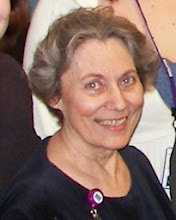This week I received a phone call from the owner of one of
my favorite used book stores. She knows
that I am interested in old books, particularly old journals or books which are
good candidates for re-binding. She told
me that she had received a box of books, but some in such poor condition that
she could not take them? Was I
interested? Yes, indeed! She brought out
a small box. There were two children’s
books, good shape, but in need of new covers or liner pages, one old joke book
(c. 1890) in tatters (the jokes were typical of the era and show that our
ancestors had quite a sense of humor dealing with things of their day), and one
volume which was badly treated but with nice engravings tipped in. Anyway, I brought them home.
This encounter reminded of the Prologue of Alexandra
Johnson’s book Leaving a Trace. I’m picking up her narrative, abridging a
bit, as she relates, “The woman who kept the journal, I was told, had lived in
the house I now own…A woman who wrote in her diary in 1895, plotting her life
in sepia ink.
Could she have
imagined how a century later someone in her own house would be fascinated by
the clues she left of a life that probably seemed immensely dull to her at the
time? (I imagined her scribbling in the
journal like homework, the task… vaguely improving.)… What happened late that
summer of 1895? Did Charlie vanish? How did he finally break her heart? I hoped that heartbreak wasn’t lurking in the
unexpected: those pale gray eyes of her close friend… Toward the diary’s end
the handwriting is frantic – the loops of the l’s swell like lungs bursting.
As I closed [her]
diary, I thought about how, if we can’t keep diaries ourselves, we still love
reading others’, eavesdropping on lives… In private moments, her hand recorded
what I’m sure her brain constantly told her was of no importance: her
life. From her journal I knew hers was a
quiet but hungrily alive life.”
We all have stories to tell – our lives lived out from day
to day, our own life stories. We can
edit the details, if we must, but who is to know ahead of time what will be
interesting or important at some point in the future. It is a great loss to the life experience of
the world, if it has not been written at all.
The value of the days of our lives on, kept in the treasure chest of our
journals.
Some Words of Encouragement:
v
“A diary is the missing link in creative life.”
[Alexandra Johnson, Ibid., p. 12]
v
“.. The life of every man is a diary in which he
means to write one story, and writes another;…” [J. M. Barrie, diary]
v
“Do not be too timid or squeamish about your
actions. All life is an experience.” [Ralph
Waldo Emerson]
v
“Every one of us has in him a continent of
undiscovered character.” [Charles L. Wallis]
v
Remember to laugh. [CR]
v
Q: What
makes the hour glass small in the middle?
A:
To show the waist of time.
